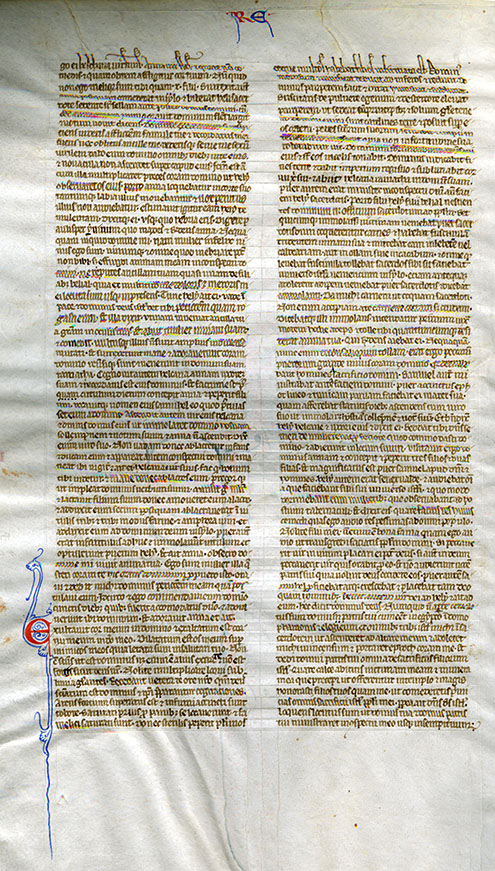Project Description
Until the development of movable type printing in the West in the 15th century, books were copied by hand. Parchment (prepared animal skin) was the usual material until paper came into common use.
The Bible was among the most-copied and deeply studied texts. This leaf, from a Bible copied in Italy in the mid-13th century, shows how medieval Bibles often used conventions of book layout and helps for the reader similar to those in modern Bibles.
Most of the recto (front) side of the page contains the prologue to I Kings by fifth century Biblical scholar and translator, St Jerome. Scholarly commentary was often incorporated into medieval Bibles, ahead of the biblical text, or as notes in the margins. The text of I Kings begins half way down the right column, signaled by a heading in red (‘Incipit liber regum I’ – ‘First Book of Kings begins’) and a large, elaborate letter F in red and blue, its filigree decoration spilling upwards between the columns of text and down into the wide lower margin. Such initials served the practical purpose of making the major divisions of a text easier to find, as well as decorating the sacred text. In addition to decorated initials, chapter numbers (in roman numerals) appear in the margins; verse numbers will not appear in Bibles until several centuries later. A compressed script (commonly called ‘Gothic’) written very small, and many abbreviations saved space. Corrections (in darker ink) can be seen between lines or in the side margins.


